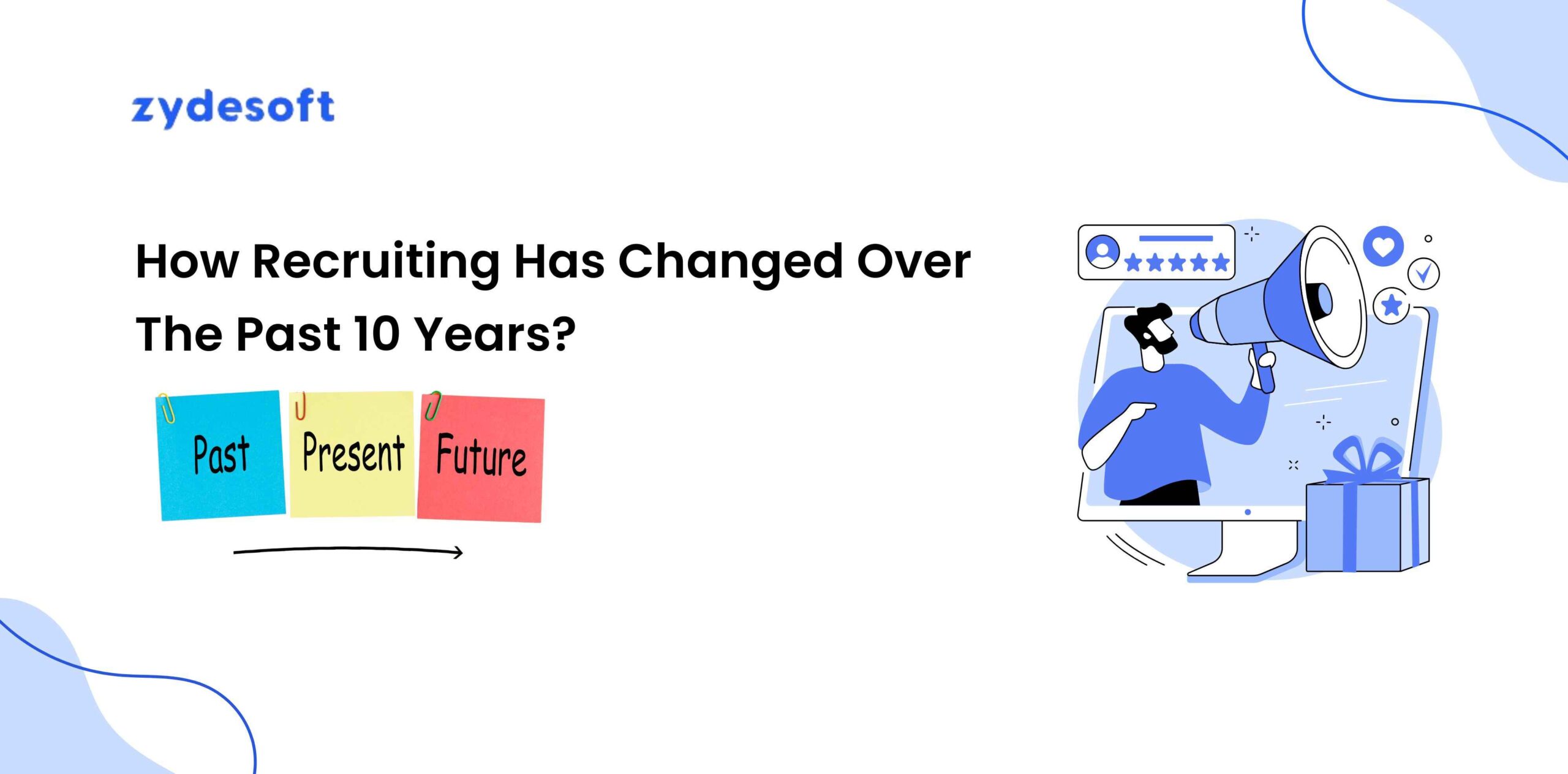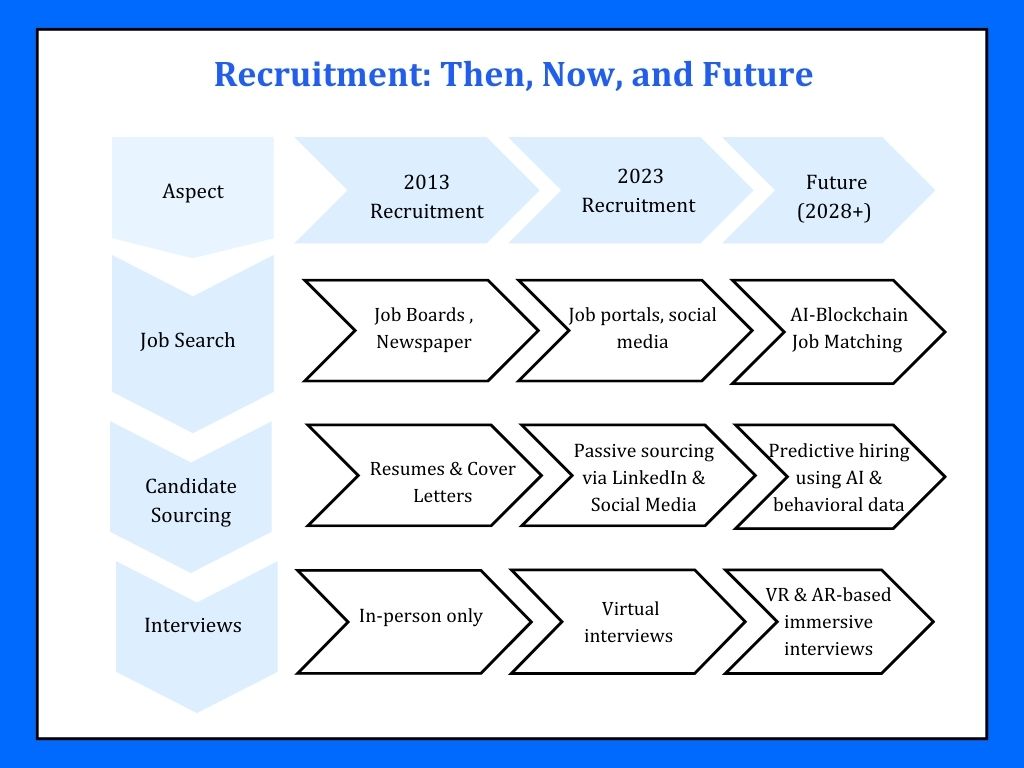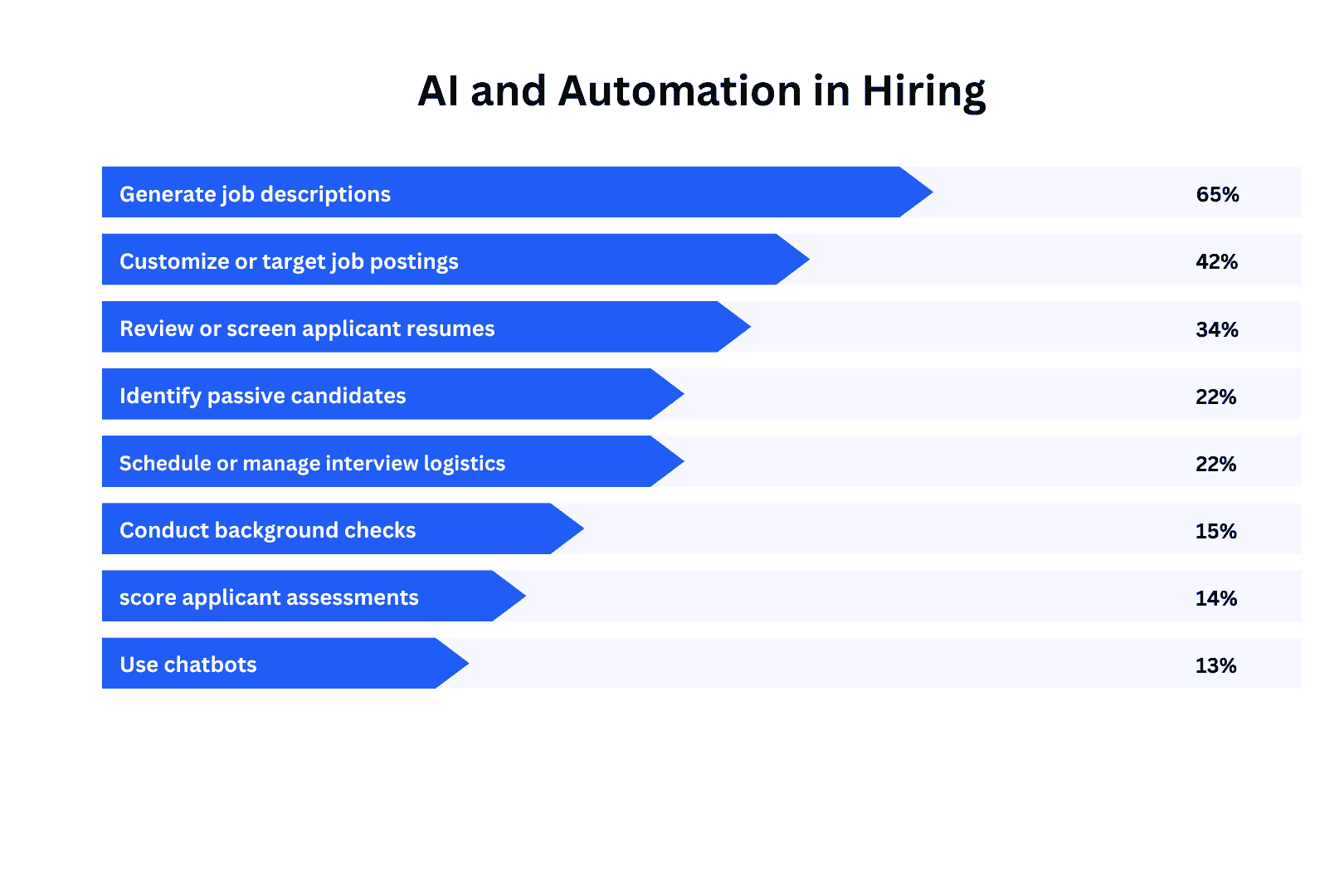
Think back to 10 years ago—job searching was a very different experience. You prepared resumes, applied through job boards, and waited for job calls. In the past years, the hiring process also took weeks, sometimes months. Today? It’s a whole new world. Do you know how recruiting has changed over the past 10 years? Over the past 10 years, recruiting has shifted from a manual, relationship-based approach to a tech-driven process. Companies now use data, AI, and job platforms to find the right candidates faster, focusing more on skills than experience.
Remote and hybrid work also changed in recruiting. Companies are focusing more on what skills you bring, rather than where you live. 64.8% of employers now hire based on skills, rather than work experience.
But it’s not slowing down. Companies are under pressure to attract the best talent. That’s why trending technologies, flexible work models, and better candidate experiences are the future.
In this article, we will discuss how recruiting has changed over the past 10 years, how the recruitment industry will grow in the future, and the recruitment trends in detail.
Let’s get started!

Traditional Job Postings – 10 years ago, the recruitment process was completely different. Companies post job offers in newspapers, industry magazines, and online job boards. At that time, there were only minimal options to track candidate’s job tracking, and applications were reviewed manually. So, the recruitment process took a lot of time to select candidates.
Manual Screening & Lengthy Processes – Hiring someone 10 years ago was a slow and inefficient process. HR teams would sit for hours, reading through stacks of resumes, trying to find the right developer. Once they picked a few, phone calls would start—setting up interviews, changing dates, and making sure everyone was available.
Dependence on Resumes and Cover Letters – Years ago, getting a job was mostly about how good your resume and cover letter looked. These were the main things hiring managers used to decide who got an interview. They had little to go on—just words on paper.
Minimal Technology in Hiring – Hiring someone 10 years ago was a much more hands-on process. There weren’t many online tools to help. Tracking applications was mostly done with emails, paper, or spreadsheets. Interviews? Almost always in person. Video calls were rare, and things like AI or smart hiring tools were pretty much unheard of.
Employer-Driven Job Market – Ten years ago, finding a job felt tougher for many people. Companies had the power they be very selective about who they hired. Remote work wasn’t common, so most people had to look for jobs close to home. If you needed a job, you often had to take what was offered.

Companies are now prioritizing specific skills over just experience or formal qualifications when hiring. They look for real abilities in coding, design, or project management, often using work samples, skill tests, or coding challenges. This shift creates more opportunities for self-taught individuals and builds diverse teams where talent and effort matter most.
Upskilling and Reskilling: Companies are increasingly helping employees learn new skills or switch careers to keep up with the changing job market.

In a competitive job market, companies focus on employer branding to attract and keep top talent. Job seekers now check social media to learn about a company before applying. Companies respond by showcasing their culture, team events, and values, not just job posts.
A strong online presence helps attract and retain talent, as social media has become a key tool for both employers and candidates to evaluate each other. Providing a positive candidate experience during recruitment is key to building a strong employer brand and attracting top talent.
Virtual interviews are now widely used, enabling recruiters and hiring managers to conduct remote interviews quickly and efficiently. Job interviews have shifted to video calls on Zoom, Microsoft Teams, and Google Meet, making remote hiring more simple. Companies can now hire talent globally, reducing costs and speeding up the process.
Job seekers benefit too—less stress, no travel, and more opportunities. While stable Wi-Fi is still a concern, virtual interviews make hiring more flexible and efficient for everyone. Employers use coding tests, personality assessments, and behavioral simulations to measure candidates’ skills and fit for a role.
Different platforms and software now help with various stages of hiring, including applicant tracking systems (ATS), video interview tools, and candidate relationship management (CRM) systems. Most companies now use Applicant Tracking Systems (ATS) to sort resumes based on keywords from job descriptions.
This saves recruiters time, helps employers find the right candidates faster, and keeps the hiring process organized. For job seekers, using the right words in a resume increases the chances of getting noticed.
AI is transforming hiring by quickly sorting applications and identifying the best candidates, saving recruiters time. It also helps reduce bias by focusing on skills and experience rather than personal connections. Overall, AI makes hiring faster, easier, and fairer for everyone.
Hiring is now driven by data, not just gut feelings. Companies analyze hiring times, costs, and candidate satisfaction to make smarter decisions and avoid mistakes. Data analytics helps recruiters spot trends, predict hiring needs, and choose the best candidates. This leads to faster hiring, better matches, and a smoother experience for job seekers and employers alike.
AI is already changing the way companies hire people—but this is just the beginning.
In the future, AI-powered tools will handle even more of the hiring work, from sorting resumes to scheduling interviews—making the process simpler and less stressful for both employers and employees.
Did you know? 65% of HR professionals in the U.S. recruiting companies now use AI and automation to make hiring easier, from finding candidates to screening applications and setting up interviews.

Hiring people from other countries is becoming more common, but it comes with challenges—like making sure someone’s qualifications are real or making sure freelancers get paid on time. That’s where blockchain a secure, digital record-keeping system—is starting to change things.
AI is helping companies hire developers quickly, but it’s raising big questions too—like, “Is the system treating people equally?” and “Who’s looking after my personal information?”
After all, no one wants to feel like a computer is deciding their future without giving them a real chance.
Due to the challenges of hiring costs and talent shortage, many companies are now shifting to IT staff augmentation as a cost-effective solution. Instead of spending the high costs for traditional hiring, businesses can scale their teams flexibly while accessing top global talent with the right staff augmentation providers in India.
Why IT Staff Augmentation?
Cost Savings: Hiring 3-5 years of experienced software developers in the U.S. costs approximately $11,260/month, while in India, it’s only $2,400/month—an 80% cost reduction.
Access to Skilled Developers: Get highly qualified professionals without the hassle of lengthy recruitment cycles.
Faster Hiring Process: Quickly onboard developers who match your needs without delays.
Many companies are cutting hiring costs and gaining a competitive edge by adopting the IT staff augmentation model. Are you ready to do the same?
Technology, remote work, and what job seekers want have been changing, making companies look at how they find and hire people in a new way. Pretty interesting right? We can see how recruiting has changed over the past 10 years, it’s unbelievable.
Today, AI tools help sort through applications faster, data helps employers make better decisions, and video calls let companies meet candidates from anywhere.
Hiring now moves more smoothly, and there’s more room to adjust to what workers need—but the competition for good people is tougher.
To do well, businesses need to use helpful tools but still focus on people.
Offering work options that fit different lifestyles, building diverse teams, and creating a workplace where people feel happy to stay matters more than ever.
The future belongs to companies that get this mix right—using technology to help with hiring, but keeping that human connection front.